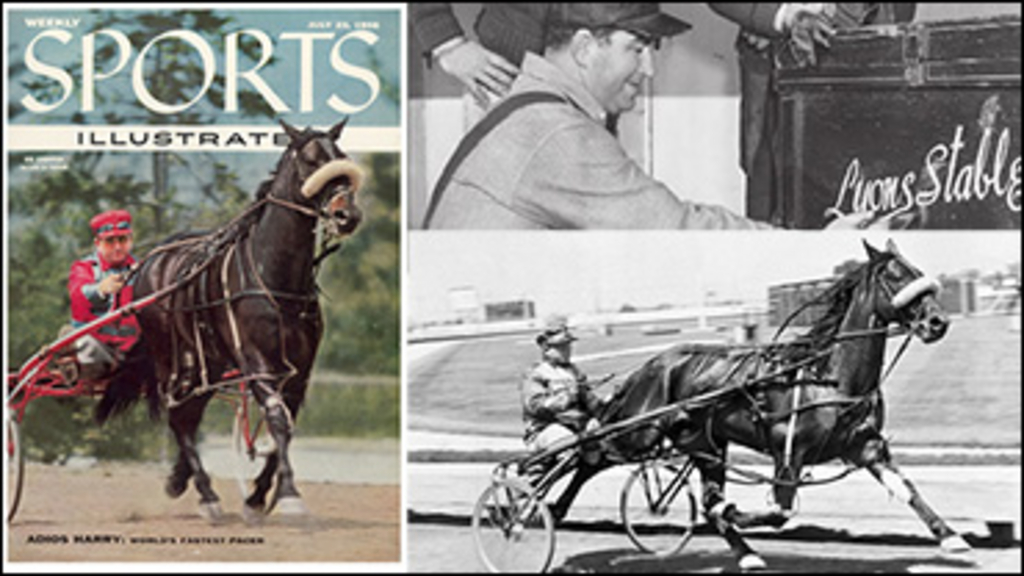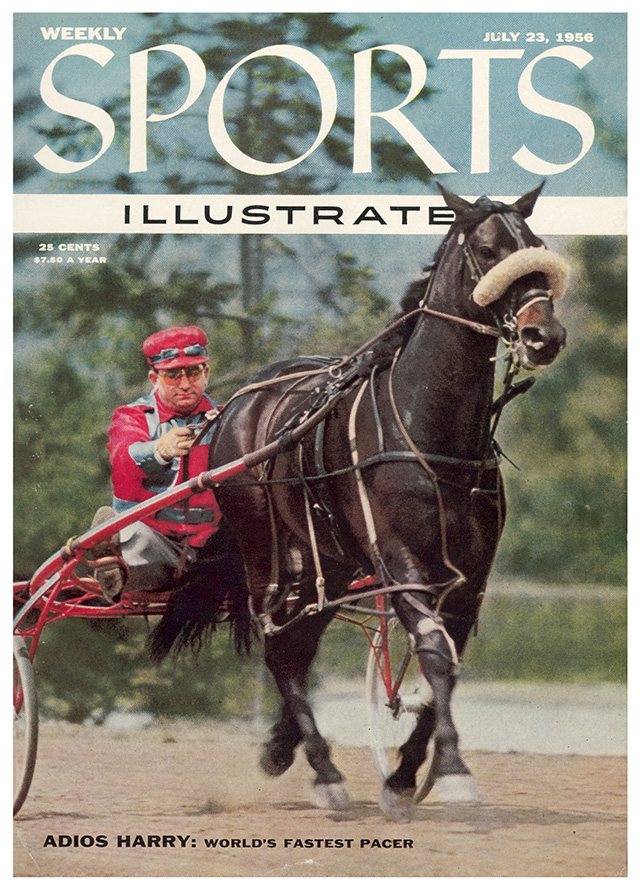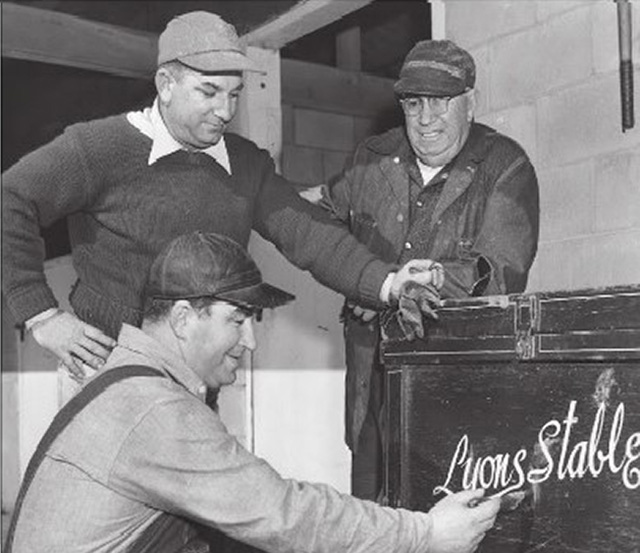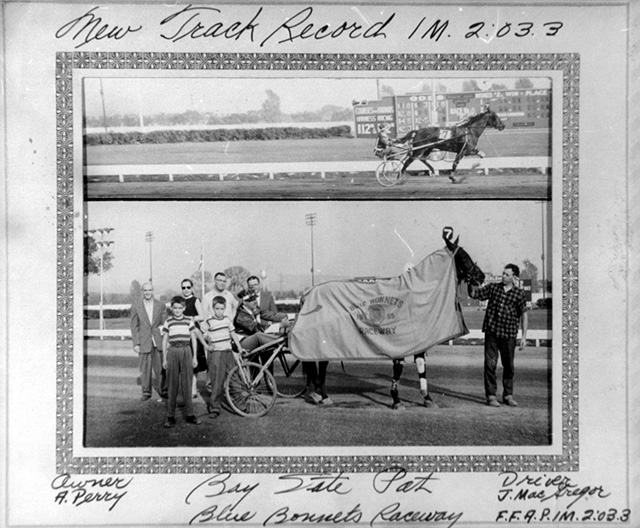
In this week's edition of Rewind Robert Smith talks about a near historic event from over 60 years ago that didn't quite turn out exactly as planned. He also recalls a rather famous horse that was the talk of the sport in the mid-1950's.

The great Adios Harry appears on the front cover of Sports Illustrated in this July 1956 issue. He was referred to as the "World's Fastest Pacer." He became the first animal to be featured on a cover of Sports Illustrated.
Based on the speed records that have existed throughout the sport for decades now, it is difficult for modern day race fans to realize just how slow horses once travelled. Although a few extremely fast miles were logged in the sport's overall record books dating back to 1905 or so, generally speaking most horses didn't pace or trot any too quickly in comparison to today. The historic names like Dan Patch, Billy Direct and Greyhound were very, very rare. The horses that most people watched week in and week out were more inclined to make the headlines if they stopped the timer in the 2:05 range.
As recently as 60 or so years ago most Canadian race fans were yearning to see a mile logged in two minutes or less but it was slow in coming. The tracks were not as fast as they are now and the horses did not generate the speed that later became prevalent. Refinement in breeding, better equipment, faster racing surfaces; take your pick as to why it all changed. Every time a big race was staged on Canadian soil that attracted the best available talent which usually meant visitors from the U.S., the talk of the Country's first two-minute mile became a topic of conversation. Racing scribes invariably dug out all available statistics and tried to envision just how this historic event might unfold.
Late in the 1955 racing season officials at Blue Bonnets track arranged for what they believed would be a historic event in Canadian harness racing history. For those many fans and resident horsemen as well who longed to witness a 'Miracle Mile' as it was called, the day had come. A horse named Adios Harry had been barnstorming the U.S. all season long and virtually wherever he performed, records were broken and cheering fans turned out in droves. Many thought it was a plan that could not fail.
-640.jpg)
Adios Harry in full flight during the 1955 season. That year he paced in 1:55 at Vernon Downs to equal Billy Direct's record which was taken in a time trial and shattered the old race record of 1:57.4 set by Good Time and Sampson Hanover. The driver is Luther Lyons.

Pictured are members of the Lyons family who owned Adios Harry throughout his entire career following his purchase as a yearling in 1952 for $4,200. J. Howard Lyons on the right, son Luther in the middle and another son John kneeling as they work on a trunk. Photo courtesy of Rebecca Batson, Kidner Howard's granddaughter.
On the afternoon of October 9, 1955 Adios Harry stepped onto the Blue Bonnets track to once and for all give the sport in Canada what it so dearly wanted and undoubtedly deserved. His much-heralded appearance would take the format of a time trial, not an actual race. His effort would be based solely on speed; there would be no circumstances involving racing luck, bad position or any of the other many pitfalls that hinder the outcome of an event. This great horse, then a four-year-old son of Adios was owned by Mr. J. Howard Lyons of Wilmington, Delaware and would be driven by his regular driver Luther Lyons, the owner's son.
The official task at hand was listed as "To Beat 2:03.3 Pacing." The existing mile record for the Blue Bonnets oval was 2:03.3, set just a short time prior to this day, perhaps a couple of weeks. The track's fastest mile belonged to a local legendary hero named Bay State Pat who was owned by Andrew Perry of Summerside, P.E.I. and then driven by Maritimer James "Roach" MacGregor. His record had been secured in the normal fashion as he won the Sunday afternoon Invitational or Free For All.

A picture of Bay State Pat following his track record performance at Blue Bonnets in 1955. (Atlantic Post Calls)
While a crowd of 10,000 eagerly watched, Adios Harry and Luther Lyons set about the challenge at hand. As the pair reached the quarter pole the announcer called out 29 seconds. By the half-way station the time was 58.4, and at the 3/4 marker the timer read 1:29.4. At this point everyone sensed not only a new track record but also the first sub 2:00 mile in Canadian history. Just past the 3/4 pole Adios Harry suddenly went off stride and dashed all hopes of a new record. Time for the mile was hung out as a dismal 2:06.4.
With the task unfinished the horse was returned to the paddock and it was decided to take a lengthy breather before another shot would be taken. Soon Lyons was back on the track and this time figuring that he had asked a bit too much too soon he decided to take it a bit slower. At the quarter the time of the second try was :30.1. thus a bit slower. At the half way station it was 1:01. Shortly after the half Harry jumped it off again. While Lyons soon had him settled he had lost way too much valuable time and the best he could do was a mile in 2:05, obviously not the way things had been planned.
Driver Lyons while disappointed was not making any excuses. He said "I guess it just wasn't his day." This marked the first time the horse had competed against time alone and many thought the absence of competition may have been a factor. For his efforts the owner received the full amount of the $1,500 purse. He had already enjoyed a record season which saw him set new records for both a mile and 1-1/2 mile distances. He had won 15 of 22 races coming into the day and amassed a bankroll of $94,540, a huge amount at that time. During the 1955 season Adios Harry equaled or lowered 10 world records. As a three-year-old he won the Little Brown Jug, which was the subject of a 2009 Rewind.
While perhaps not openly spoken about I suspect that there was a certain rivalry that naturally existed between the two big Montreal tracks as to which one would eventually claim bragging rights to being the first track to host a sub-2:00 mile. Both locations possessed extremely fast and well-groomed racing strips and each had seen their fair share of very fast miles in recent years. The possibility of a so-called 'miracle mile' was a huge drawing card. This was an era when literally tens of thousands of fans attended races in hopes of being part of an important piece of history; being in the crowd when the two-minute barrier was finally broken was something that many wished for.

Above appears the headline from the October 10, 1955 edition of the Montreal Gazette that describes the outcome of Adios Harry's visit to Blue Bonnets the previous day.
Undoubtedly well behind the scenes that day many plans were afoot. Probably a few magnums of champagne had been chilled, perhaps a bouquet or two of flowers were on hand and whatever else might accompany a record-setting day. Surely the turf journalists had some pencil drafts ready for the next day's paper. Sometimes things are just not meant to be; sometimes history cannot be fashioned or planned. The famed harness racing scribe Hans Grottke wrote the following passage in the Montreal Gazette following Adios Harry's attempt to make history. "He came, he saw; but he did not conquer."
Two-minute speed would come to both Montreal tracks long before it arrived elsewhere, but in its own time. Watch for future Rewinds to read about these well-documented yet memorable happenings.

